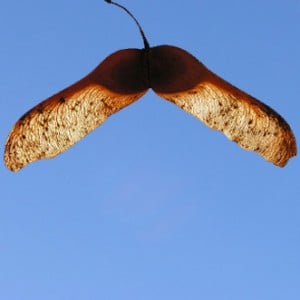 Over the past few years, there has been an increase of the amount of horses that have died from Seasonal Pasture Myopathy in the UK. Seasonal Pasture Myopathy is a disease caused by neurotoxins in sycamore seed trees, which are picked up by horses when grazing. These neurotoxins attack the horse’s central nervous system, and can lead to a painful and distressing death. In the Autumn of 2014, strong winds lead to higher than usual contamination of pastures, as more seeds were blown in, and data from the National Equine Health Survey recorded 4 times more cases than in previous years. Risk Factors: Often horses that suffer from Seasonal Pasture Myopathy are kept in paddocks with little grass, with an accumulation of dead matter, and without alternative food sources such as hay. Sycamore seeds themselves are not overly palatable, but horses low in alternative food sources can often eat these in high numbers. Symptoms:
Over the past few years, there has been an increase of the amount of horses that have died from Seasonal Pasture Myopathy in the UK. Seasonal Pasture Myopathy is a disease caused by neurotoxins in sycamore seed trees, which are picked up by horses when grazing. These neurotoxins attack the horse’s central nervous system, and can lead to a painful and distressing death. In the Autumn of 2014, strong winds lead to higher than usual contamination of pastures, as more seeds were blown in, and data from the National Equine Health Survey recorded 4 times more cases than in previous years. Risk Factors: Often horses that suffer from Seasonal Pasture Myopathy are kept in paddocks with little grass, with an accumulation of dead matter, and without alternative food sources such as hay. Sycamore seeds themselves are not overly palatable, but horses low in alternative food sources can often eat these in high numbers. Symptoms:
- Problems breathing
- Lethargy
- Shivery/twitching
- Sweating
- Inability to stand
- Dark urine
If your horse is displaying one or a combination of these symptoms, call your vet immediately, and it may be worth taking other horses off the potentially affected pasture until a diagnosis has been reached. Advice from the British Veterinary Association and the British Equine Veterinary Association is to: * Restrict access to seeds by using temporary fencing. * Ensure horses have access to good quality uncontaminated pasture. * Move horses off pasture at times of risk. * Provide supplementary feed in the field to minimise the risk of horses being tempted to ingest seeds. * Avoid leaving wet hay on the ground where it will rot and potentially trap seeds. * Discuss the risks and how to identify early clinical signs of SPM with your veterinary surgeon. * Be aware that a field without sycamore trees can still contain seeds spread by high winds or flood water. * Not prune seed laden sycamore trees as this can lead to massive pasture contamination and further increase the risk to horses.

